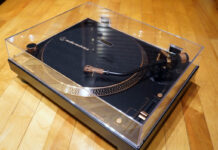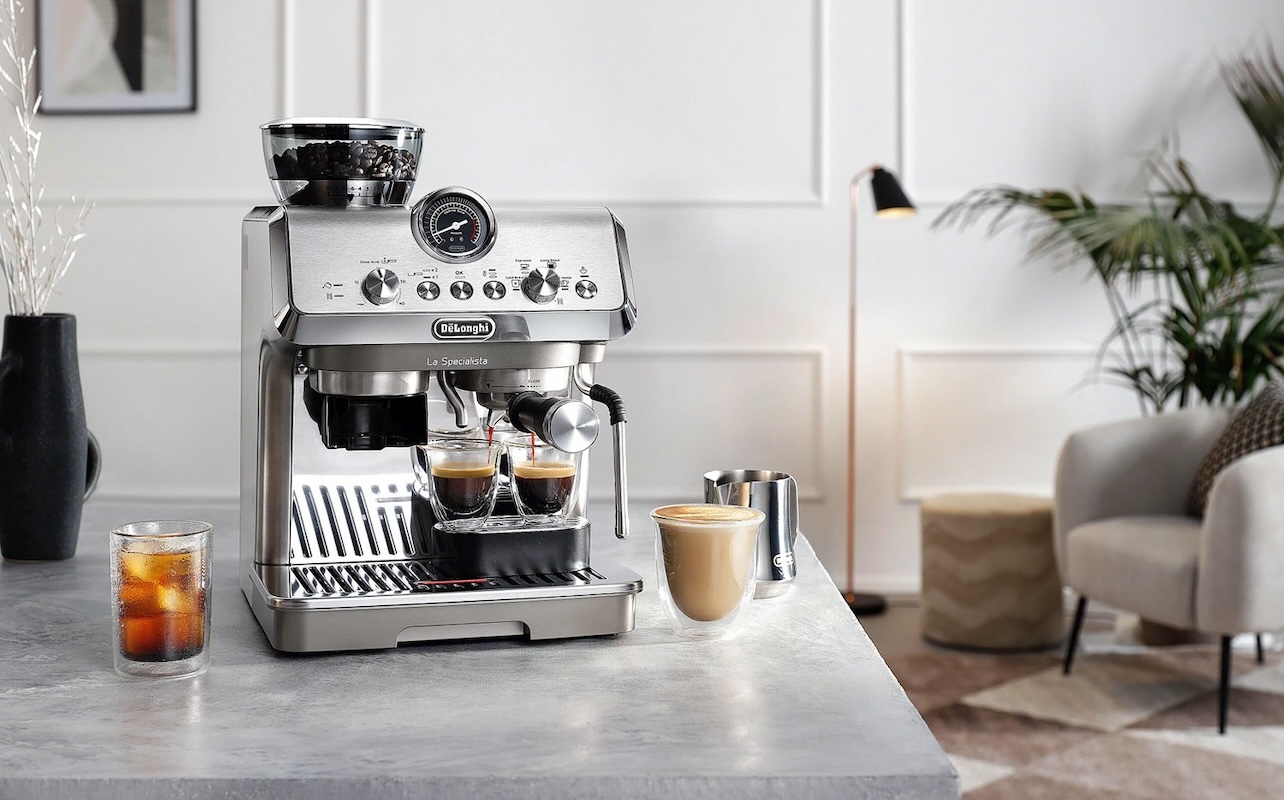
With so many De’Longhi espresso machine models on the market, it’s easy to feel overwhelmed. They offer everything from manual pump systems to automatic machines with all the bells and whistles, covering the full spectrum of what you could want out of your espresso maker. How do you decide which one fits your budget, counter space, and how much hands-on control actually suits your lifestyle?
This ultimate buying guide breaks it all down for you. Whether you’re a coffee purist who enjoys crafting each espresso shot by hand, or someone who prefers to press a button and walk away, this article will help you find the perfect match. It’ll walk through different De’Longhi coffee machine types, compare must-have features, and help you avoid common buyer regrets—so your next morning cup truly feels like it came from your favourite café.
Step 1: Determine your coffee-making style
Before you start browsing models, it’s crucial to understand how involved you want to be in the coffee-making process. Many buyers assume “more features” equals “better,” but the truth is that the best espresso machine is one that aligns with your habits.
Ask yourself:
- Do I enjoy the ritual of grinding, tamping, and steaming milk? Or do I just want a quick coffee drink before work?
- Am I more of a hobbyist or a convenience-driven user?
- How much time am I willing to spend cleaning and maintaining the machine?
By answering these three questions, you’ll save yourself from overspending on a model that’s either too advanced or too basic for your needs. Think of it like finding your “coffee personality.” Once you know your personality, that clarity will guide every coffee decision that follows.
Step 2: Learn the De’Longhi categories
Once you’ve identified your style, the next step is choosing the right type of machine. De’Longhi offers three main categories: fully automatic, manual pump, and hybrid (La Specialista) models.
Fully automatic/bean-to-cup machines

If convenience is your top priority, a fully automatic De’Longhi espresso machine is the way to go. These machines, often called “bean-to-cup” machines, handle everything. They’re your appliance for grinding beans, tamping, brewing, and (in some cases) even frothing milk.
Automatic espresso machines are perfect for busy mornings or multi-person households where consistency matters more than customization. The downside? They tend to be bulkier machines, taking up more counter space and coming with a higher price tag.
If you want coffeehouse results at the push of a button, models like the De’Longhi Magnifica Evo or De’Longhi Rivelia offer exceptional convenience and flavour balance. They offer one-touch brewing for drinks including espresso, lattes, iced coffee, and more. (We reviewed the Rivelia White, which is a Best Buy exclusive, here on the Best Buy Blog. Unlike other espresso machines, the Rivelia has a Bean Switch System—allowing you to swap out your entire bean hopper between shots.)
Manual pump espresso machines

For those who love the craft of coffee-making, manual De’Longhi machines offer you the hands-on experience of being your own barista. You load the ground coffee, tamp it manually, and control the extraction time and milk frothing yourself.
These machines, like the De’Longhi Dedica Duo, tend to be more compact and affordable. They reward practice and patience, giving you full creative control over flavour and texture. However, they also require more effort and upkeep.
If you find joy in the process, a manual machine can make every cup feel like an accomplishment. They’re a great way to save space and learn how to pull a beautiful shot of espresso—all on your own.
La Specialista (hybrid/assisted machines)
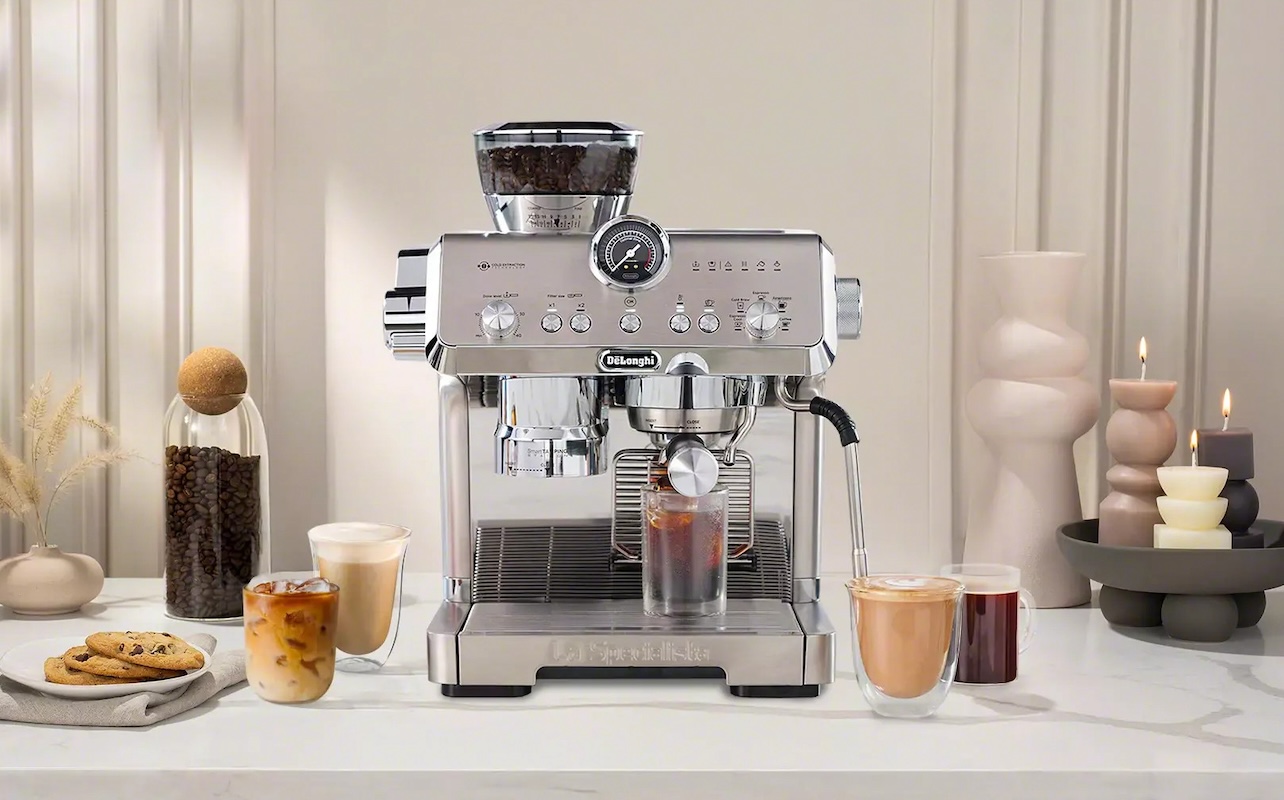
De’Longhi’s La Specialista line bridges the gap between manual and automatic. It’s designed for those who want some creative input, without the full workload of a manual setup.
These hybrid machines feature assisted grinding, tamping, and extraction, often paired with automatic milk texturing. The La Specialista Arte Evo, for example, allows you to dial in espresso strength while still offering guidance through built-in sensors and pre-sets.
For coffee enthusiasts who appreciate quality but want reliability and speed, this middle-ground category is ideal. (Our reviewer Rae has reviewed the La Specialista Opera here on the Best Buy Blog.)
Step 3: Compare key features
Once you know which type of machine suits you, the next step is comparing key features that affect performance, flavour, and usability.
Here’s a quick overview:
| Feature | Why it matters | What to look for in a De’Longhi model |
|---|---|---|
| Grinder quality | Affects coffee espresso flavour and extraction | Opt for conical burr grinders for even grinding |
| Milk frothing system | Determines foam texture and ease of milk drinks | Choose between manual steam wand or automatic frothing system |
| Footprint & size | Impacts counter space and usability | Check dimensions. Some models, like the Dedica, are ultra-slim to save space |
| Customization options | Controls brew strength, volume, and temperature | Higher-end models offer programmable settings for each user |
| Ease of cleaning | Extends machine lifespan | Look for removable parts and automatic cleaning cycles |
| Bean Swap System | Allows users to use their preferred espresso beans or swap to decaf without finishing their last batch of beans | Only available in the De’Longhi Rivelia |
Let’s dive deeper into some of these features.
Grinder quality: burr vs. blade
If you’re buying an automatic or hybrid De’Longhi coffee machine, pay close attention to the grinder. De’Longhi’s high-end models use burr grinders, which grind beans evenly to produce consistent grounds. Consistently-sized grounds are essential for balanced espresso extraction.
Avoid blade grinders if your budget allows. Blade grinders produce a more uneven result, which can cause over- or under-extraction of your espresso. If you choose a manual machine without a built-in grinder, consider investing in a separate conical burr grinder—it’s worth every penny for the taste improvement.
Milk frothing system: manual or automatic?
Do you love cappuccinos and lattes? Then your machine’s frothing system should be a major consideration.
Manual steam wands (found on models like the Dedica Duo) allow full control over milk texture. However, they require some skill to use. (It’s surprisingly easy to burn your milk, especially as a beginner!) Automatic milk frothers, like the LatteCrema System in the Magnifica Evo, make the process effortless with consistent, café-style microfoam at the push of a button.
If milk drinks are one of your daily rituals, investing in an automatic frothing system can make your mornings smoother and more enjoyable.
Footprint and design
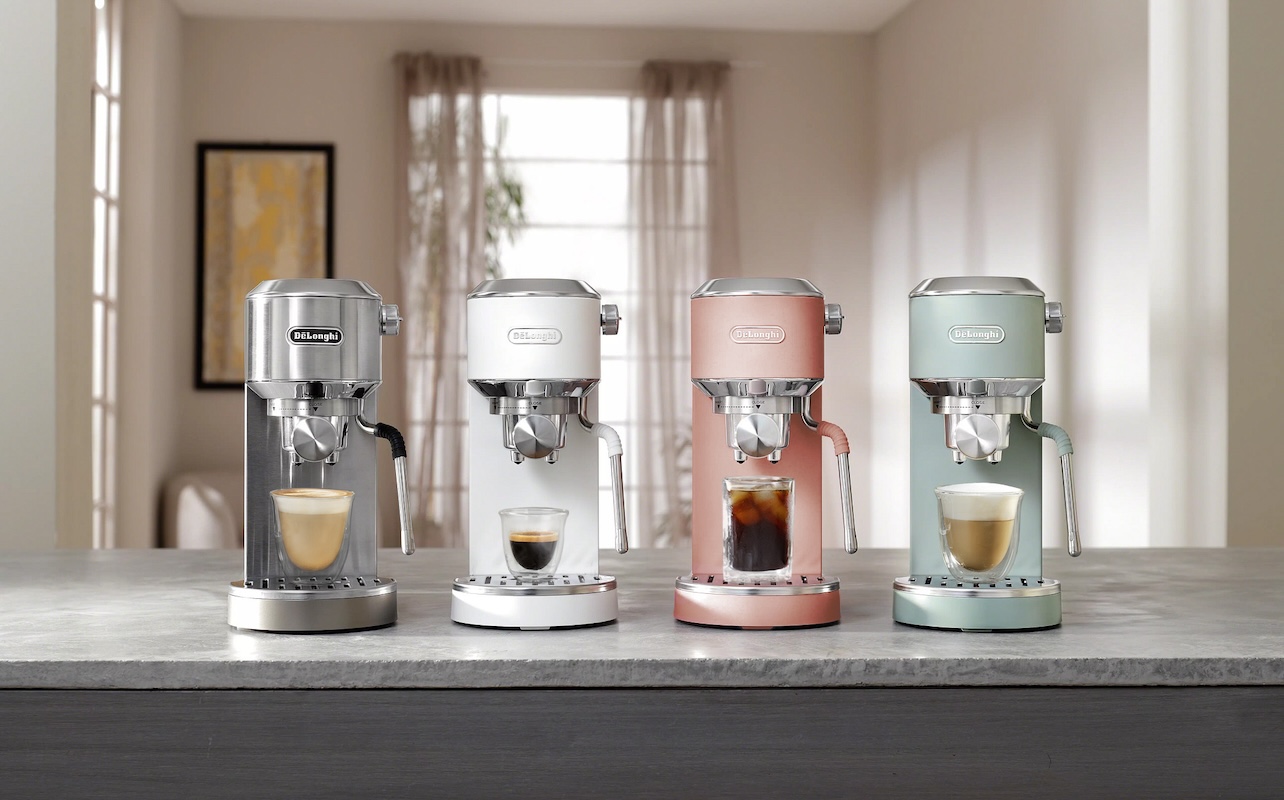
Even the most advanced espresso machine won’t help if it doesn’t fit your counter. De’Longhi models vary widely in size, from ultra-compact manual machines to larger bean-to-cup systems.
Before buying, measure your counter space, especially the height under cabinets. A compact De’Longhi espresso machine, like the Dedica Duo line pictured above, fits perfectly in small kitchens, while full-size models like the Eletta Explore are better suited to larger setups.
Customization and programming
Some users love to tinker with every setting; others just want consistent coffee. De’Longhi offers both options.
Automatic machines often allow you to adjust drink strength, temperature, and milk ratios automatically—check the specific model to find out what it can customize for a drink. Higher-end models even save multiple user profiles, which is a great feature for families.
Manual machines, on the other hand, rely on your technique for personalization. Whatever you have the skill to do, you can do.
Ask yourself how much freedom you want. Would you rather set it once and forget it, or fine-tune every detail as your mood shifts?
Step 4: Match your budget and expectations
Your budget will likely influence your final choice, but so will your long-term expectations. Here’s a general guide to help:
| Category | Typical price range (CAD) | Best for |
|---|---|---|
| Manual | $200–$600 | Coffee purists, small kitchens |
| Hybrid (La Specialista) | $700–$1,300 | Enthusiasts seeking balance of control and convenience |
| Automatic | $800–$2,000+ | Busy households, consistency lovers |
When budgeting, remember to factor in ongoing costs. Budget for your beans, descaling solution, filters, and possibly a separate bean grinder. Avoid overbuying for features you won’t use (like advanced milk systems if you mostly drink straight espresso). Similarly, don’t underbuy—machines that lack power or durability often lead to early replacement costs.
Step 5: Check out the top De’Longhi models

Here are some standout models across the range, each catering to a different kind of coffee drinker:
- De’Longhi Rivelia – A sleek, fully automatic powerhouse of a machine with a built-in burr grinder, intuitive touch panel, bean swap system, and automatic frother. Ideal for quick, consistent, customizable results for multiple family members.
- De’Longhi Magnifica Start – A more budget-friendly automatic espresso machine with one-touch coffee drinks and easy maintenance.
- De’Longhi La Specialista Arte Evo – A hybrid option with a classic look. Great for those who enjoy hands-on control with guided assistance and automatic dosing.
- De’Longhi Dedica Duo – A slim manual espresso machine that’s perfect for tight spaces, those who love a traditional barista experience, and smaller budgets. Features a manual experience with a digital, touch interface.
- De’Longhi Linea Classic – A no-frills manual model ideal for espresso enthusiasts who prefer simplicity. Features a manual button design and pressure gauge.
Each of these represents De’Longhi’s signature blend of Italian design, reliability, and accessible technology.
Step 6: Consider maintenance and long-term ownership
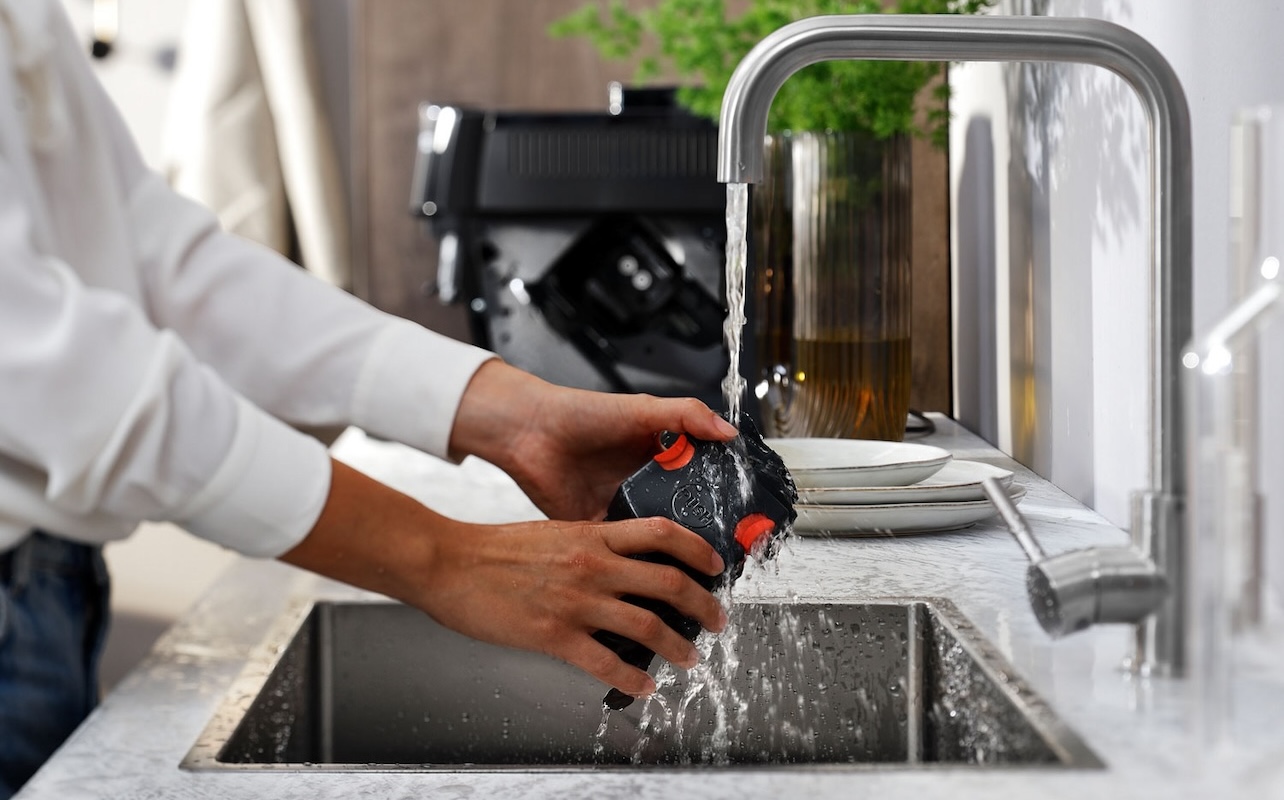
One of the most overlooked aspects of owning an espresso machine is maintenance. Even the best De’Longhi coffee machine needs regular care to perform at its best.
De’Longhi designs its machines with ease of cleaning in mind. Most feature removable brew groups, drip trays, and milk systems. (Some automatic models even perform self-cleaning cycles for convenience!)
To prolong the life of your machine:
- Use filtered water to reduce mineral buildup and improve espresso flavour.
- Descale every 2–3 months as needed, depending on your home’s water hardness.
- Clean milk frothers after every use to prevent clogging.
- Store your beans properly to maintain grinder performance.
This regular care ensures your investment lasts for years and continues to deliver café-quality results.
Step 7: Your espresso machine checklist
Finally, before making a purchase, use this quick checklist to confirm you’re choosing the right machine:
- How much control do I want? (Full manual/hybrid/full automatic.)
- Do I make milk-based drinks regularly?
- What’s my counter space and budget?
- Which features matter most: grinder, frother, size, programmability, customization?
- Am I comfortable with the cleaning and maintenance required by this machine?
- Does this model fit my lifestyle, not just my wishlist?
If you can answer “yes” confidently to all of these, you’ve found your match.
Conclusion
The best De’Longhi espresso machine isn’t necessarily the most expensive one—it’s the one that fits your daily routine, space, and desired level of involvement. By understanding your coffee-making style, learning the difference between manual, automatic, and hybrid models, and prioritizing the features that matter the most to you, you can make a choice that delivers your perfect serving of espresso every morning.
With De’Longhi’s reputation for quality and innovation, any model you choose is a step toward enjoying café-quality coffee right in your own kitchen. You can count on each shot of espresso to be made exactly the way you like it. You’re not just buying a coffee maker; you’re investing in your everyday ritual—one espresso at a time.
This article was drafted using AI technology and then reviewed, fact-checked, and revised by a member of our editorial team.



